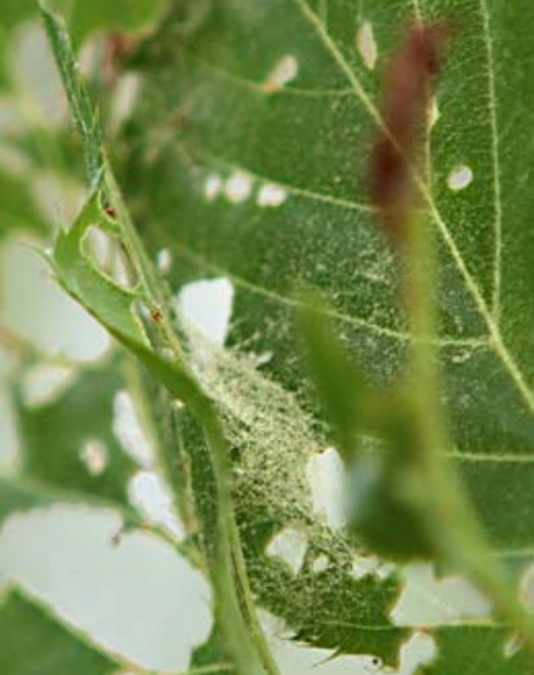While the folks of Massachusetts and other areas of New England heartily welcome the spring season after a relentless winter, they are finding a very unwelcome problem emerging from the brutal snow: serious damage to trees and plants from the Winter Moth Caterpillar.
In an alert sent from Hyannis Country Garden to communities on Cape Cod, residents are urged to look closely at their Maple, Cherry, Willow, Apple, Pear and other deciduous trees for signs of damage. They warn that while leaves may look as if they are simply “breaking dormancy,” they may be, in reality, being eaten by the Winter Moth Caterpillar. The damage looks quite like that which we see from household moths – pits, holes and large missing patches.
These moths are an invasive species found in parts of Europe, the near east and in North America. The first western infestation was recorded in Nova Scotia in the 1930’s which perhaps explains why the majority of damage is being done in the northern states of New England as well as some Pacific Northwest states like Washington and Oregon. The northern midwestern states surrounding the Great Lakes are too cold for too long to allow even winter moths to propagate, but areas like Massachusetts, Vermont, Rhode Island and Maine are perfectly suitable breeding grounds for these foliage-feeding insects to thrive.
The prevention and control of Winter Moths is actually quite safe, simple and effective, but there are a few things to know before moving forward with treatment. The most important factor is the stage of metamorphosis.
The lifecycle of the Winter Moth can seem rather broad and imprecise, so it helps to follow these basic guidelines to help control active destruction and future infestations.
Adult moths emerge from the ground in late November/early December and go about the business of mating. Adult moths are not a threat to plants, so there is nothing that needs to be done during that period. Equally benign eggs are laid in short order (just a few weeks) and begin to hatch in March or April.
It is the little green caterpillar that hatches in the spring that causes all of the damage. They take a couple of weeks to find their legs, but begin spinning silk and spanning tree branches to prepare for their May/June feeding frenzy. It is at this point that one of two treatments can be applied safely and effectively.
Spinosad is the most recommended treatment (and one with a most interesting history). While it is an organic bacterium, it can be harmful to bees and other beneficial insects when it is wet. It is therefore recommended for use only at night – or in areas with no flowering foliage. An alternative popular and effective treatment is Bacillus Thuringieness (BT). This is another organic bacterium – but one which is not a threat to the bee population.
As with most problems, an ounce of prevention is worth a pound of cure. While the eggs are harmless, the single best way to prevent moth damage is to apply a dormant oil spray over trees during the egg stage (Jan – March). Dormant oil spray will suffocate the eggs and give you a significant advantage come spring.
While the lifecycle stages may be somewhat broad, here are a few easy-to-remember dates to follow:
As you are trying to follow-through with your New Year’s resolutions in January and February, add “Spray dormant oil” to your list of things to do.
If this plan goes out the window with the rest of your resolutions, be sure to spray the Spinosad or BT by Mother’s Day at the latest (“Moth” of Mother’s Day being a helpful pneumonic device).
Most garden experts agree that spraying once and watching, is the best treatment plan. Be sure to cover leaves carefully and always spray plants that grow beneath the trees (caterpillars often fall down and decide to stay put). The caterpillars generally die within 2-3 days after application, so reapply a week or so later if some remain.
If these simple tips are followed, New Englanders can enjoy the beautiful trees they’ve waited so long to see!
Credit: Diana Cammarota




























